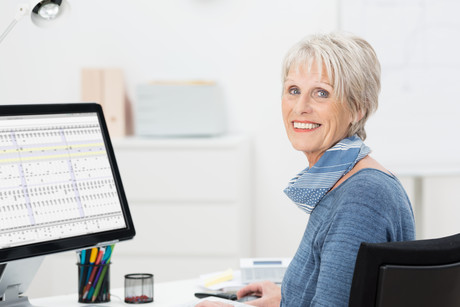Technology and innovation in Australia's aged care

Australia’s aged-care workforce needs to meet the challenges of increased demand, consumer choice, a rapidly changing marketplace and the integration of new technologies.
The existing workforce needs to be renewed as the latest statistics tell us that an estimated 60% of the existing workforce will reach retirement age over the next 15 years. These workers not only need to be replaced, but our aged-care workforce needs to rapidly increase to meet the growing demand for different types of services. By 2050 it is estimated that we will need up to 1.3 million workers in the industry.
The workforce will need to be responsive, knowing that we have a new cohort of older Australians with broader expectations of how, where and by whom their care is delivered.
Workers will also need to be adaptive, with technology likely to significantly impact on the type of care and services that are delivered and the training and skills required of the workforce.
We have to reimagine the types of work that will be carried out by our aged-care workforce because our future workers will be delivering more than just personal care — they will need to engage with smart technologies and innovations in the provision of care, and be able work across residential-, home- and community-based settings.
The future of our aged-care workforce has been the focus of a long-running Senate Inquiry that kicked off before the July federal election and is due to hand down its report on 28 April 2017. LASA made a submission to the Inquiry early last year and gave evidence at the Future Aged Care Workforce Inquiry in Canberra at the start of November.
In our presentation to the Inquiry we highlighted innovation as being one of the key workforce challenges to our LASA members. Innovation in terms of new technologies, models of care and new service offerings.
The technological capacity to create myriad devices and applications that enable independence already exists. The challenge is to identify how the technology can be applied in a way that is user friendly, develops self-awareness and therefore self-management of chronic disease and complements the input of skilled professionals.
People prefer independence to dependence. We have increasing incidence of chronic disease; those who suffer most from chronic disease and are most compromised in relation to their capacity to retain independence are older Australians.
Effective use of technology can enable self-confidence that in turn sustains independence. Independence in this context means independence in any living environment from the family home to supported environments.
Technology can help to track health and wellbeing through personal electronic health records that can be selectively accessible to family and health professionals. Non-invasive wearable devices can be used to monitor basic health indicators such as blood pressure, body temperature, respirations, pulse and wellness indicators such as activity and social connectedness.
Already, new research is building our understanding of cognitive decline leading to new approaches in aged care and reducing current dependence on residential service solutions. Smart houses with voice activation, monitoring systems, automation for lighting and electricity, and fall detection alarms will enable home-based, dementia-friendly environments.
Our aged-care workforce, and the regulations that support it, will need to be much more flexible if aged-care providers are going to be able to deliver the changing models and delivery of care Australians expect.
Australian-first virtual ED marks 500K consultations
This month, the Victorian Virtual Emergency Department — an Australian first —...
Digital Health Festival: transformation through connection
Across two days in May, DHF25 will bring together 8000 attendees, 400 speakers and 200 exhibitors...
Connected care: bridging the gap
With the My Health Record 'Sharing by Default' amendment bill now passed both houses of...









